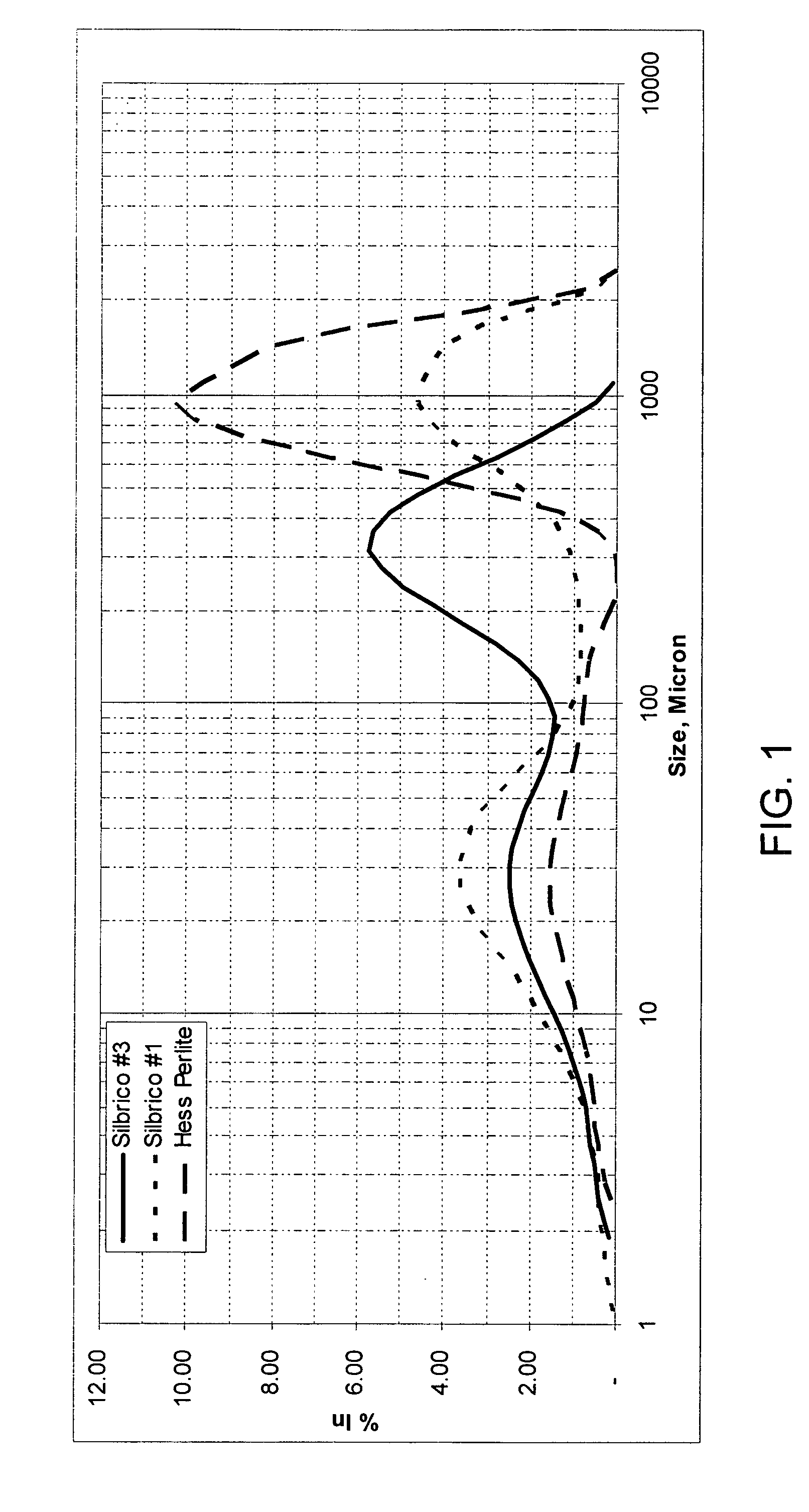Acoustical gypsum board panel and method of making it
a technology of gypsum board and acoustic gypsum, which is applied in the field of gypsum board panels, can solve the problems of increasing manufacturing costs, affecting the installation of ceiling panels, and both methods of making ceiling panels are relatively expensive, so as to reduce the fatigue of installers, reduce the strength of nails, and improve the sound absorption
- Summary
- Abstract
- Description
- Claims
- Application Information
AI Technical Summary
Benefits of technology
Problems solved by technology
Method used
Image
Examples
example 1
[0044]A formulation for an acoustical panel included the components of Table 1 and was made according to the steps described above. All component weights were measured on the basis of pounds per 1000 ft2 (MSF). The percentage amounts of each component are also given as a weight based on 1000 pounds of dry stucco.
TABLE 1% based on stuccoComponentLbs / MSFdry weightStucco834HRA70.84%Expanded Perlite42751.2%Starch263.12%Glass Fiber212.52%Sodium trimetaphosphate161.92%
[0045]Sample boards were made using each of the three expanded perlites listed in Table 2 in the composition of Table 1. Water was added in amounts of 1 part water to 1 part dry solids on a weight basis. Foam was generated using a 1% solution by weight of Steol CS-230. Target densities of 20-25 pounds per cubic foot were obtained by adding foam until the target density was obtained. The properties of each of the perlites, as well as the properties of the board it produced, are shown in Table 2 as well. Graphs of the particle...
PUM
| Property | Measurement | Unit |
|---|---|---|
| particle diameter | aaaaa | aaaaa |
| particle length | aaaaa | aaaaa |
| particle diameter | aaaaa | aaaaa |
Abstract
Description
Claims
Application Information
 Login to View More
Login to View More - R&D
- Intellectual Property
- Life Sciences
- Materials
- Tech Scout
- Unparalleled Data Quality
- Higher Quality Content
- 60% Fewer Hallucinations
Browse by: Latest US Patents, China's latest patents, Technical Efficacy Thesaurus, Application Domain, Technology Topic, Popular Technical Reports.
© 2025 PatSnap. All rights reserved.Legal|Privacy policy|Modern Slavery Act Transparency Statement|Sitemap|About US| Contact US: help@patsnap.com

